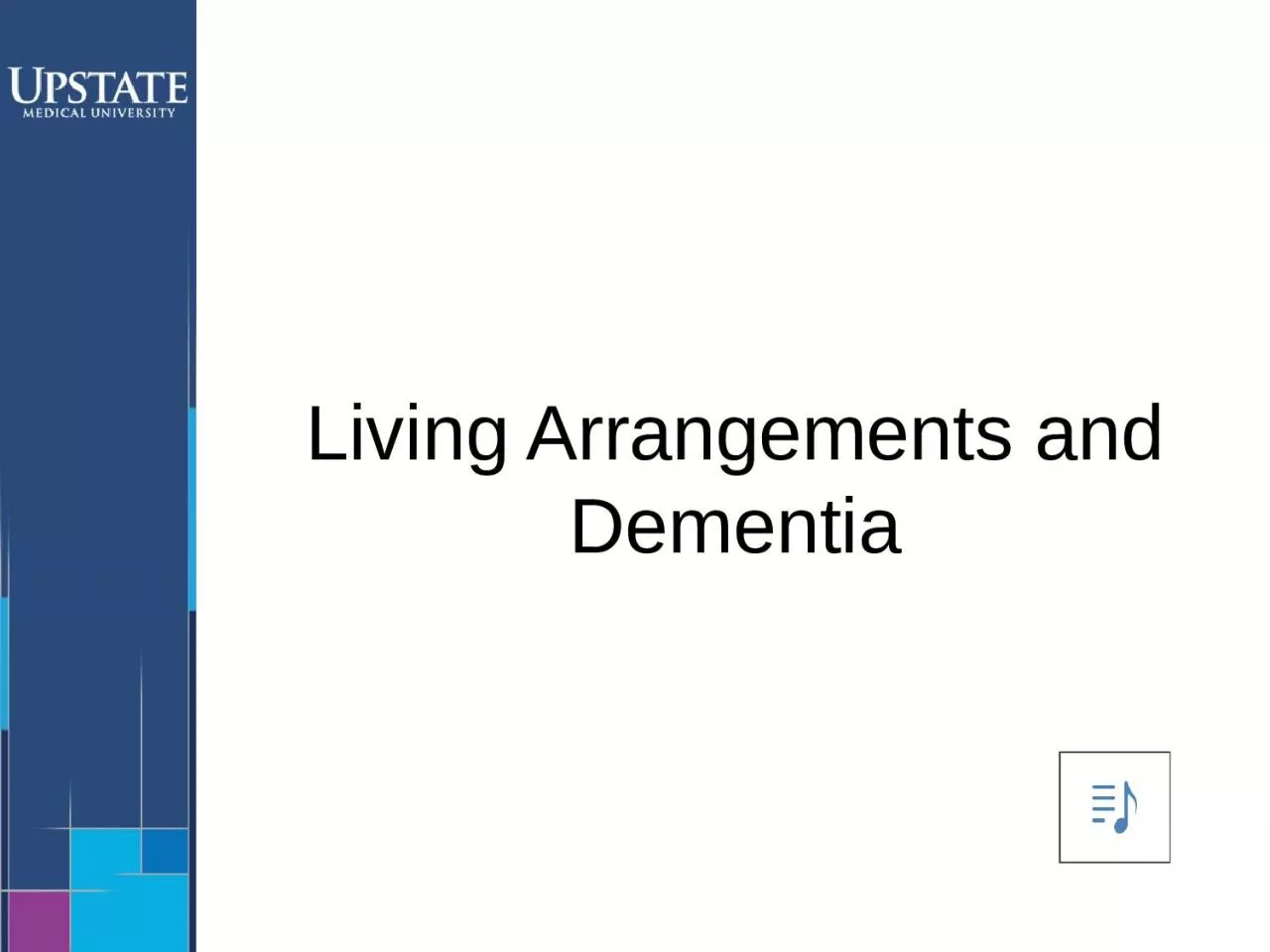

It is important to consider living arrangements for people living with dementia There are many options Below are some common choices Additionally some facilities are dedicated to caring for those with dementia Levels of care vary by facility Medicaid may cover some of these services Medicaid ID: 1038152
Download Presentation The PPT/PDF document "Living Arrangements and Dementia" is the property of its rightful owner. Permission is granted to download and print the materials on this web site for personal, non-commercial use only, and to display it on your personal computer provided you do not modify the materials and that you retain all copyright notices contained in the materials. By downloading content from our website, you accept the terms of this agreement.
1. Living Arrangements and Dementia
2. It is important to consider living arrangements for people living with dementia. There are many options. Below are some common choices. Additionally, some facilities are dedicated to caring for those with dementia. Levels of care vary by facility. Medicaid may cover some of these services. Medicaid coverage varies by state, and not all facilities and service providers accept this insurance. It is very important to look into each option depending on your insurance.
3. House or Apartment: Some people with dementia live in a house or apartment, with or without a caregiver. Sometimes a caregiver is a family member and/or friend, or a home health care aide might be hired. This type of care might be paid for with cash, Medicaid, or long-term care insurance. Medicare does not pay for long-term home health care.
4. Assisted Living Facility: This is a building where residents have apartments or rooms. Typically, meals and activities take place in a group setting. Some support is provided for residents who need help caring for themselves. This type of care might be paid for with cash, Medicaid, or long-term care insurance. Not all assisted living facilities accept Medicaid. Medicare does not pay for assisted living care.
5. Respite Care: Respite care offers a break for a caregiver to address other responsibilities or rest. This is short-term care that varies in length from a few hours, days, or weeks. Respite care may take place in a home, day center, or healthcare facility. Respite care is paid for with cash, Medicaid, or long-term care insurance. Medicare does not pay for respite care except for people receiving hospice care.
6. Have Questions? Ask your doctor or health care provider at your next appointment. Your local Office for Aging is also a good resource. Alzheimer’s Association. (n.d.). In-home care. Retrieved from https://www.alz.org/help-support/caregiving/care-options/in-home-careAlzheimer’s Association. (n.d.) Residential care. Retrieved from https://www.alz.org/help-support/caregiving/care-options/residential-care. National Institute on Aging. (2017). Aging in place: Growing older at home. Retrieved from https://www.nia.nih.gov/health/aging-place- growing-older-homeNational Institute on Aging. (2017). Finding long-term care for a person with Alzheimer’s. Retrieved from https://www.nia.nih.gov/health/finding-long-term-care-person-alzheimersNational Institute on Aging. (2017). What is respite care? Retrieved from https://www.nia.nih.gov/health/what-respite-care